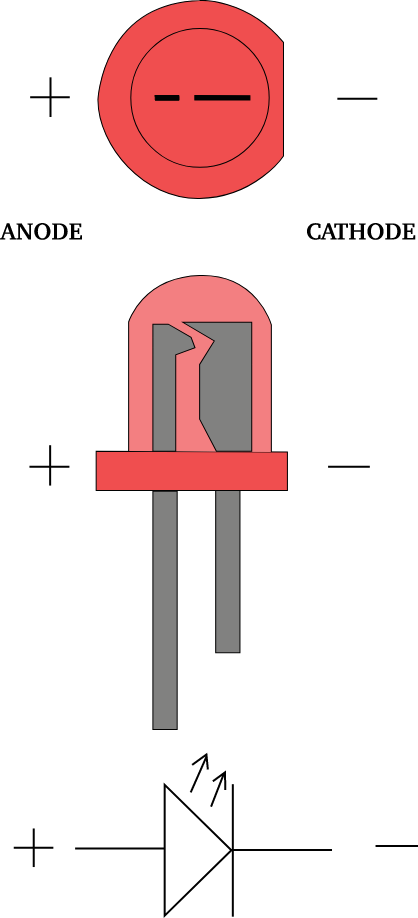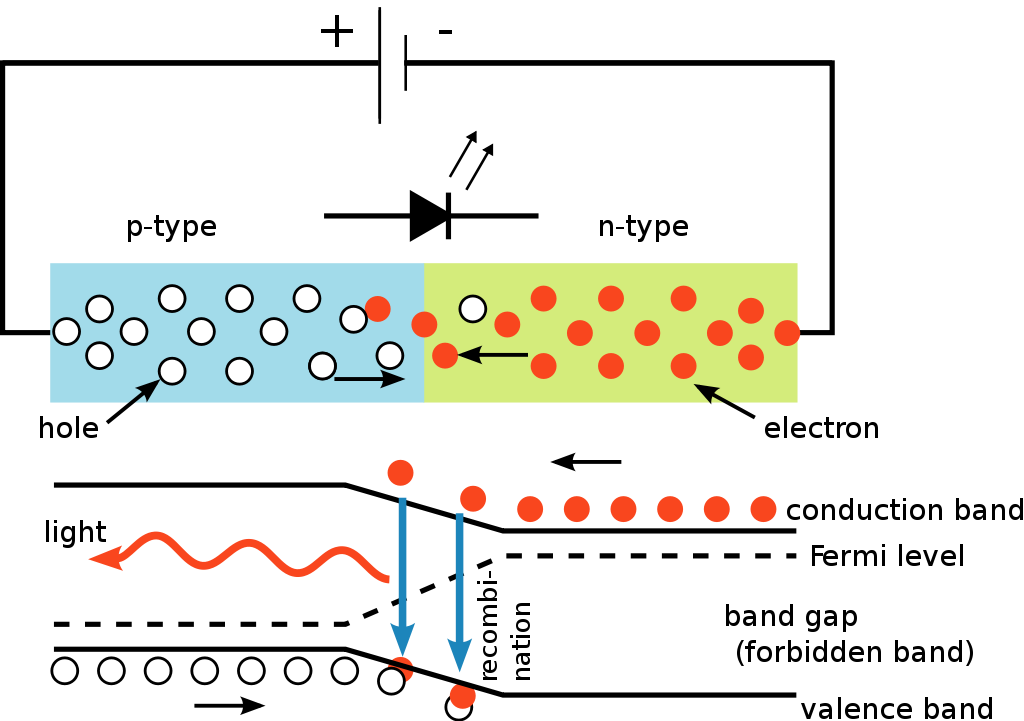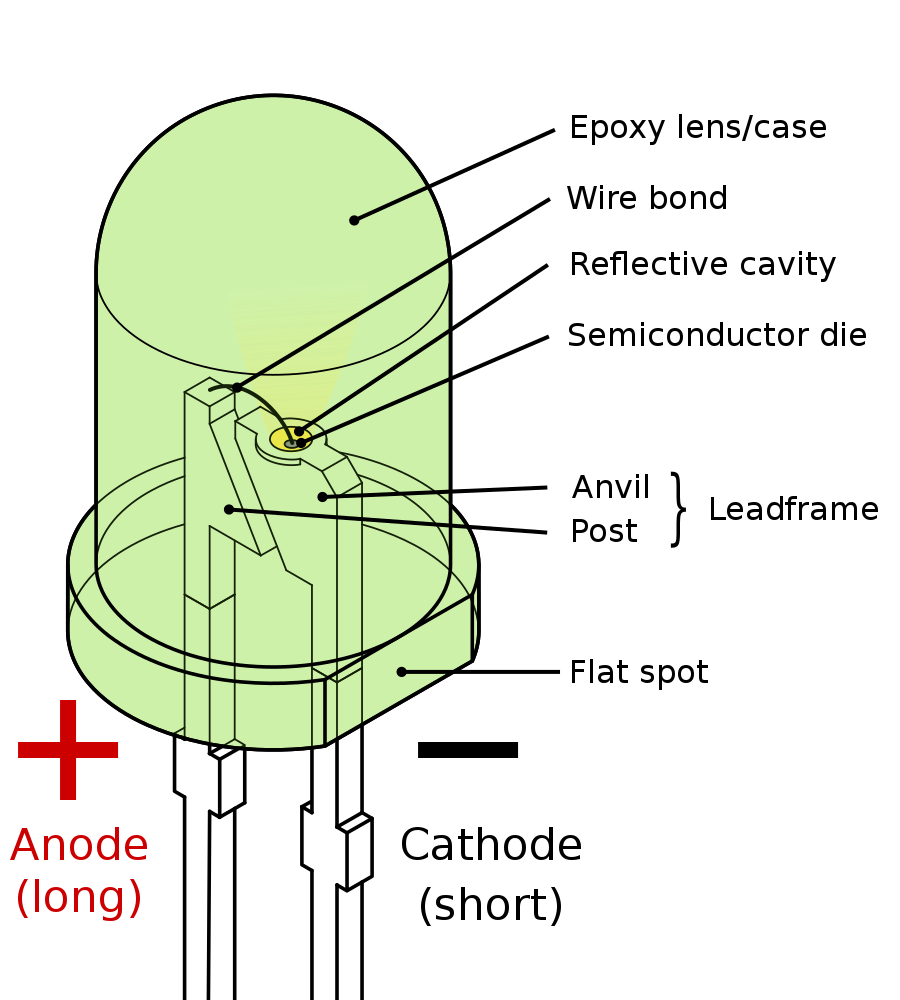The full form of LED is Light Emitting Diode. An LED is an electronic device based on semiconductors that emit electromagnetic energy when supplied with a current.
It is made up of a junction of two semiconductors- p-type and n-type semiconductors called as P-N junction diode. Hence the name “Diode” in “Light Emitting Diode”.
Index
History

The first reports of generating electromagnetic energy from a semiconductor material date back to 1927. In 1927, Russian inventor Oleg Losev created the first LED. It was not until the 1960s that LEDs were commercially available in full form.
In 1962, Texas Instruments created the first commercially available LED SNX-100 (890nm) with Gallium Arsenide as the semiconductor.
In 2014, Shuji Nakamura, Hiroshi Amano, and Isamu Akasaki were awarded the Nobel Prize in Physics for the invention of the blue LED.
Working of an LED
At the heart of an LED is a p-n junction diode. In the working mode, the p-n junction is forward biased. Electrons from the n side recombine with the holes in the p side at the junction. The electrons jump from the conduction band(Higher energy level) to meet holes in the valence band(Lower energy level).

Electromagnetic energy with a magnitude equal to the band-gap of the junction is emitted in this process. The frequency \(\nu\) of light emitted and the band-gap and gap energy \(\Delta E \) are related as:
\(\Delta E = h \nu\)
Where, \(h = 6.626 \times 10^{-34} \frac{kg m^2}{s}\)
Example: A band gap of 1.67eV produces light with wavelength 743nm.
Construction of an LED

A typical commercial LED is constructed to minimize power loss and maximize working efficiency and life. The semiconductor junction is a die-shaped material placed inside a reflective cavity.
The cavity acts as the cathode. The other connection is made through a thin wire bond. This whole setup is encapsulated inside a transparent epoxy housing.
Advantages of an LED
- LED having full form as Light Emitting Diode have a longer operational life span than conventional light sources like incandescent bulbs or fluorescent tube lights. A typical LED lasts for around 50,000 hrs before being useless.
- LEDs have a higher efficiency than other light sources. They produce a greater number of lumens per watt of power.
- In incandescent bulbs, almost 90% of energy is wasted as heat energy. Energy loss in the form of heat is minimal in an LED-based light bulb.
- LED lights have superior on-off switching capabilities. Moreover, the lifespan of the LED light is unaffected by the number of on-offs.
- LEDs can be operated with very low input voltages. Voltages as low as 3 V is enough to operate a small LED.
Applications of an LED
- LED Displays: LEDs are arranged in an array fashion with each LED as a pixel. This setup works as an electronic display. Commercial LED TVs contain hundreds of thousands of LEDs arranged in a few tens of centimeters. LED displays are used extensively in smartphones, Digital watches, seven-segment displays, and various other electronic devices needing a display.
- LEDs Light Bulb, Tube Lights, etc.: LED lights save a lot of energy and electric bills for the consumer. Hence they are the first choice for any light fitting.
- Remote Controls, Infrared LEDs: Infrared LEDs are used in Remote controls like a TV remote, AC remote, Sound System Remote, etc.
FAQs
The full form of LED is Light Emitting Diode. An LED is an electronic device based on semiconductors that emit electromagnetic energy when supplied with a current. It is made up of a junction of two semiconductors- p-type and n-type semiconductors.
AC input has an oscillating EMF. In the positive cycle, when the LED is forward biased, light is produced. In the negative cycle, when the LED is reverse biased, light is not produced. This leads to an overall dimming effect.
